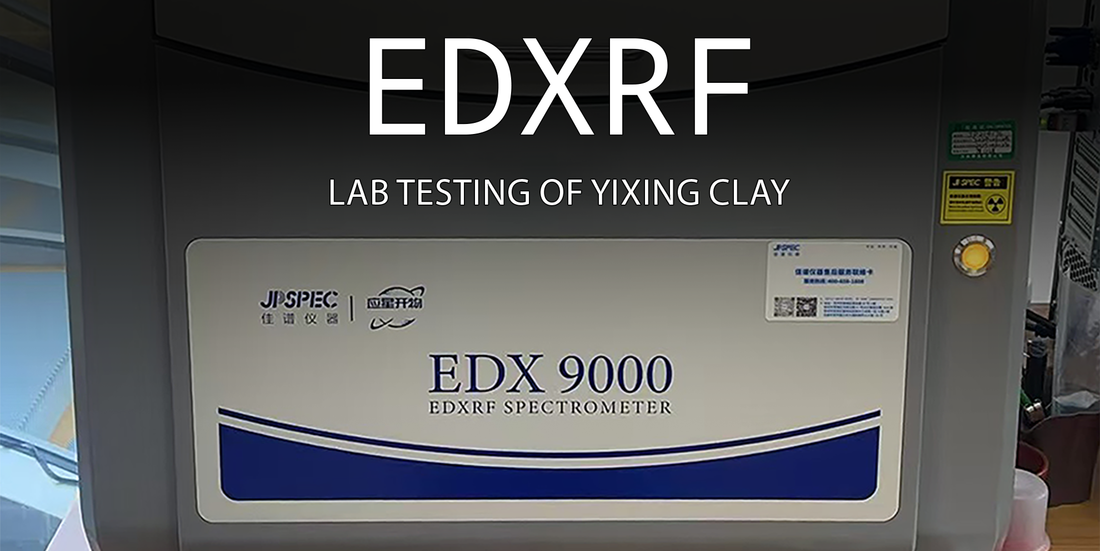
EDXRF Testing of Yixing Teaware
Over the years, there have been ever evolving trends in the processing of Yixing clay, and in the past 50 years or so the introduction of chemical additives being used in the state owned factories to alter colours, improve the stability of the processed clay and acids used to purify the clays of iron and other mineral impurities.
Most modern boutique potters will say their clay is unmixed, but very often upon investigation, at least barium carbonate is used to stabilise the clay and prevent efflorescence.
With our Fang Xia range of teaware we set out from the beginning to find clays that didn't have any additives. This has made the journey more tricky than it would be otherwise since adding BaCO3 to the clay during processing is the norm. We've found a few batches of clay without it & had to begin processing batches of clay from the original ore to ensure that there's nothing else mixed.
Furthermore, it is standard for potters to spray their pots with a BaCO3 to prevent efflorescence while making the pots. Efflorescence is when the water soluble salts present in the raw clay migrate to the surface. Once fired, the colour of the teapot can change, normally an undesirable effect. Making pots without BaCO3 left us with some constraints - the potter has to make smaller batches of pots and work faster & sometimes inevitably in practice some pots will have efflorescence and variations in colour. To deal with this effect we fire these pots a second time in a wood kiln. Firing in a wood kiln normally produces colour changes in the pots & with these changes being greater than the change due to efflorescence, it mitigates this effect. Not all of our wood fired pots had efflorescence, but it's how we deal with those that do. Since we're a fan of wood firing anyway, it's a solution that works for us.
There has been a growing availability of EDXRF testing in the past few years. Energy Dispersive X-ray Fluorescence (EDXRF) is a non-destructive analytical technique that provides rapid qualitative and quantitative elemental analysis of various materials. It works by bombarding a sample with high-energy X-rays, causing the atoms to emit characteristic fluorescent X-rays, which are then detected and analyzed to determine the elemental composition.
We recently sent samples of 4 of our clays for EDXRF testing and in the interests of transparency have decided to publish the results. As we process more clays and make more pots, we'll also test and publish those reports too.











